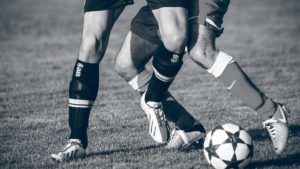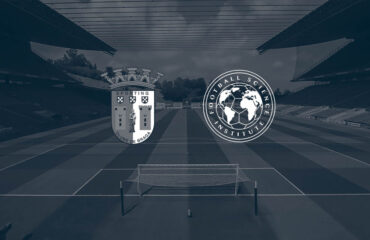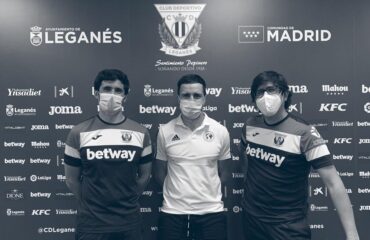Black Box Prediction Methods in Sports Medicine Deserve a Red Card for Reckless Practice: A Change of Tactics is Needed to Advance Athlete Care.
Bullock GS, Hughes T, Arundale AH, Ward P, Collins GS, Kluzek S.
Sports Med. 2022 Feb 17. doi: 10.1007/s40279-022-01655-6.
In this Current Opinion article, the use of machine learning, “black box” prediction methodology for injuries and performance in sports is examined, highlighting the lack of transparency of the prediction algorithms used because of the profitable nature of proprietary systems, posing a threat to delivery and development of effective athlete care, and impairing the integration of prediction models into sports medicine and performance.
Reference values for collective tactical behaviours based on positional data in professional football matches: a systematic review.
Rico-González M, Pino-Ortega J, Castellano J, Oliva-Lozano JM, Los Arcos A.
Biol Sport. 2022 Jan; 39(1):110-114. doi: 10.5114/biolsport.2021.102921. Epub 2021 Mar 6.
This systematic review on elite football matches collective tactical behaviours found 13 original articles. The team length and width ranged from 31 to 46 m and from 35 to 48 m, respectively. The distance from a defending team’s goalkeeper to the nearest teammate ranged from 9 ± 6 to 30 ± 7 m, the goal line-recovery location from 27 to 37 m, and the opponent’s goal line from 42 to 50 m. The stretch index ranged from 7 to 16 m. Mean team area was ~900 m2 and the area of the pitch which included all outfield players divided by the 20 outfield players ranged from 79 ± 15 to 94 ± 16 m2. All studies provided greater distance and area values during the team-possession phase in comparison to the non-possession one. The ball location on the pitch determined the collective tactical behaviour of the teams. These data can be used as a reference to design and select training strategies to optimize tactical performance.
How does curve sprint evolve across different age categories in soccer players?
Filter-Ruger A, Gantois P, Henrique RS, Olivares-Jabalera J, Robles-Rodríguez J, Santalla A, Requena B, Nakamura FY.
Biol Sport. 2022 Jan;39(1):53-58. doi: 10.5114/biolsport.2022.102867. Epub 2021 Mar 1.
Research has shown that soccer players regularly execute curved sprints during matches. This study on 84 U15, U17, and U20 soccer players found that ) there were significant differences in the “good” (faster) side among age groups but not in the “weak” side, with curve symmetry and relationship between curved and linear sprint times decreasing with age, maybe as a result of the specialization process, highlighting the importance of focusing the training interventions mainly on improving the curve sprint “weak” side on younger players.
Effect of alterations in whole-body cryotherapy (WBC) exposure on post-match recovery markers in elite Premier League soccer players.
Malone JJ, Hodges D, Roberts C, Sinclair JK, Page RM, Allan R.
Biol Sport. 2022 Jan;39(1):31-36. doi: 10.5114/biolsport.2021.102931. Epub 2021 Mar 1.
This study on 16 elite Premier League soccer players over 2 seasons found significantly lower IgA concentrations when using medium whole body cryotherapy exposure (-121 ± 1°C for 173 ± 2 s) compared with lower and higher exposures, with no differences in perceived measures of wellness and salivary alpha amylase.
Variations in the physical demands and technical performance of professional soccer teams over three consecutive seasons.
Akyildiz Z, Nobari H, González-Fernández FT, Praça GM, Sarmento H, Guler AH, Saka EK, Clemente FM, Figueiredo AJ.
Sci Rep. 2022 Feb 14; 12(1):2412. doi: 10.1038/s41598-022-06365-7.
This observational study of three seasons of the Turkish Super League (2015-2016, 2016-2017 and 2017-2018) on 918 football matches with optical tracking found that the number of lost balls, ball touches in the central corridor, and goals from set pieces increased from season one to the others while the number of successful dribbles reduced over time without changes in the external load, reflecting evolutionary trends regarding technical variables in this league.
High rate of muscle injury despite no changes in physical, physiological and psychophysiological parameters in a professional football team during a long-congested fixture period.
Pinheiro GS, Quintão RC, Claudino JG, Carling C, Lames M, Couto BP.
Res Sports Med. 2022 Feb 13:1-12. doi: 10.1080/15438627.2022.2038159. Online ahead of print.
This study in 13 professional football team during a prolonged congested fixture period found a high muscle injury incidence of 19.0/1,000 hours of match exposure. These injuries occurred after individual players participated in sequences of 8.3 ± 3.3 consecutive matches with intervals of 3.8 ± 0.8 days. No differences were observed in physical performance or in fatigue-related parameters irrespective of the time interval between matches.






You must be logged in to post a comment.